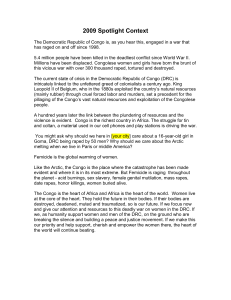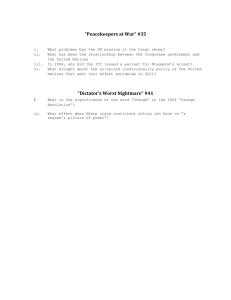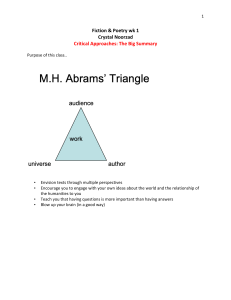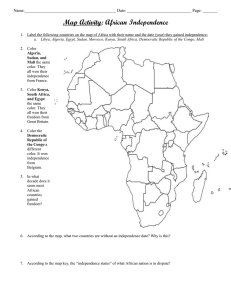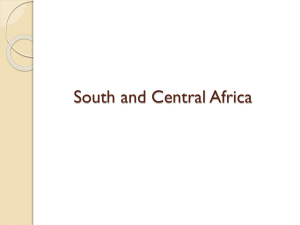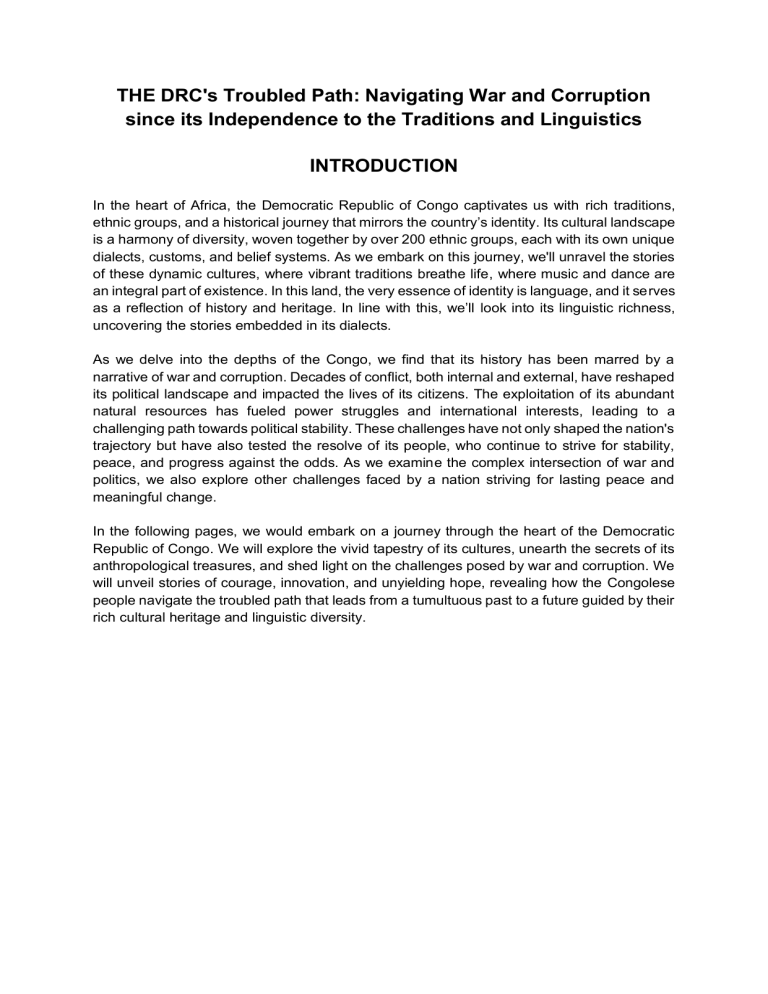
THE DRC's Troubled Path: Navigating War and Corruption since its Independence to the Traditions and Linguistics INTRODUCTION In the heart of Africa, the Democratic Republic of Congo captivates us with rich traditions, ethnic groups, and a historical journey that mirrors the country’s identity. Its cultural landscape is a harmony of diversity, woven together by over 200 ethnic groups, each with its own unique dialects, customs, and belief systems. As we embark on this journey, we'll unravel the stories of these dynamic cultures, where vibrant traditions breathe life, where music and dance are an integral part of existence. In this land, the very essence of identity is language, and it serves as a reflection of history and heritage. In line with this, we’ll look into its linguistic richness, uncovering the stories embedded in its dialects. As we delve into the depths of the Congo, we find that its history has been marred by a narrative of war and corruption. Decades of conflict, both internal and external, have reshaped its political landscape and impacted the lives of its citizens. The exploitation of its abundant natural resources has fueled power struggles and international interests, leading to a challenging path towards political stability. These challenges have not only shaped the nation's trajectory but have also tested the resolve of its people, who continue to strive for stability, peace, and progress against the odds. As we examine the complex intersection of war and politics, we also explore other challenges faced by a nation striving for lasting peace and meaningful change. In the following pages, we would embark on a journey through the heart of the Democratic Republic of Congo. We will explore the vivid tapestry of its cultures, unearth the secrets of its anthropological treasures, and shed light on the challenges posed by war and corruption. We will unveil stories of courage, innovation, and unyielding hope, revealing how the Congolese people navigate the troubled path that leads from a tumultuous past to a future guided by their rich cultural heritage and linguistic diversity. BODY I. History The country of the Democratic Republic of the Congo or in short “DRC” can be found in the center of Africa. The former name of DRC was zaire, it encircles all of the Congo River Basin. The Basin comprises 33.33% of the rainforests of Africa which has a variety of species of living things. The Basin also consists of many valuable resources such as the deposits of diamonds and coltan. With this Congo has gone through the hardships of colonialism, dictatorships, and violence caused by the rebellious groups and neighboring countries. (Greenwood, 2002) The second largest country in Africa, DRC, has been in ongoing conflicts for many years. Millions of children and adults face so many societal issues to name a few; they are dealing with poverty, violence, trauma, and displaced communities. Below is the timeline of the DRC’s history, which shows the country’s difficulties. HISTORY OF DRC 1960-1965 (Independence) - The country has finally achieved independence from Belgium and becomes the Republic of Congo. However, the first prime minister Lumumba was murdered. 1965-1990 (Corruption) - Mobutu Joseph rises to power and renames the country to Zaire. He was known for corruption which increased the struggle of the economic crisis of the country. 1994 (Genocide) - In 1994 it was known for the monstrous Rwandan Genocide of the ethnic cleansing of Hutus in Rwanda. Which forced 1 million Hutus to flee and migrate to the east of DRC. 1996-1997 (War for Peace) - The first war happened in this period, Rwanda gas captured eastern Zaire, which was teamed up with anti-Mobutu rebels that came from Uganda. They finally stopped the reign of President Mobutu, and Zaire was finally and officially renamed as the Democratic Republic of the Congo. ( Peace Treaties) 2002-2003 - Congo and Rwanda signed a peace treaty. Furthermore, Uganda and Congo signed a peace accord regarding the eradication of Ugandan soldiers. 2008-2018 - Another term for presidency was granted to Kabila. The conflicts of the country forces millions of people to evacuate their homes. So to end the conflict 11 countries signed a peace treaty. 2019 - 11 countries in Africa signed another agreement to eradicate conflict across Africa. The armed forces were crushed, but during this time it still has the highest number of displaced people with an increase in violence. (History of the Democratic Republic of the Congo, n.d.) The history of the Democratic Republic of Congo is full of tragedies as it faces many societal issues. People being oppressed, displaced, and killed. It faced war, dictatorship, genocides, and also an economic crisis. Therefore, the DRC cannot really develop and evolve into a stable self-sufficient country. The history of what the country of DRC has gone through shows us written records of the past of the country. Furthermore, it discusses the human actions that happened during the time. We discussed the political science behind the country, through a brief overview of how the government was like in the history of the DRC. It showed us how corrupt some presidents were and how they are incapable of solving societal issues. Yes, there were peace treaties signed but violence is still a huge factor until today. Lastly we can see that cultural anthropology is somewhat involved since people's lives are always changing. Families were displaced, people migrated to different places due to the violence caused by the wars and rebellious groups. II. Issues/Politics The country’s abundance of manpower and natural resources are plentiful but due to the war’s continuously happening, they have been used to fuel the war effort in the Congo such as mass conscription to armies and the production of weapons of warfare against opposing forces of the government’s army. Similarly, it is one of the world’s largest reserves of metals and rare earth materials that are used in the production of advanced electronics, since the world is reliant on these resources to produce their products, multinational companies and private military companies have increasingly gotten themselves involved in the conflict in DRC. In relation, U.S companies used to own many cobalt mines in the Congo, but now they are sold to the Chinese since the Barack Obama and Donald Trump administrations. Now Chinese companies are deploying DRC’s army to protect their assets from rebels and armed groups. On the other hand, Congolese mines have used child labour and other illegal practices, allegedly including those owned by Chinese companies. The weak governance of its government results in a widespread of armed groups roaming around the country which has lead to massive human rights violations, such as rape, extreme poverty, and genocides. Furthermore, the country has undergone political repression and instability from its government since the 1990’s, after gaining independence in 1960. Therefore the conflict continues to destroy agricultural activities which further limits the access of the people to food and many children experienced malnutrition. In addition, many schools have been damaged and destroyed because of the conflict which makes it unsafe for children who need to go to school while living in the middle of a conflict zone. Ultimately, millions of children are displaced from their homes and families which increases their vulnerability in experiencing child labor, sexual abuse, and trafficking. The war caused shelling of historical infrastructures, looting of ornaments, and the inaccessibility of the people to their religious beliefs. An example would be the Stella of Matara, a 2,500 year-old sculpture which has toppled due to the war between Eritrea and Ethiopia. Mosques, Mausoleums, and Sufi tombs which were buildings in Africa that are dated back since the 15th century have been destroyed by rebel Islamist groups that took over Timbuktu. Adding more, the Sacred forests were ruined by civilians who used it to seek refuge from the war and active combatants who have also used it to hide from government troops. The ancient manuscripts and invaluable artifacts have been targeted by Ethiopian and Eritrean troops, and due to the lack of knowledge of certain artifacts the people of Africa have led to them being mistakenly used as firewood. Museums in Sierra Leone and the Oron Museum have been affected by the war, which has destroyed artifacts by gunfire, while the rest have been destroyed from natural disasters because of the damage caused by the war to the infrastructure of the museum which has led to the exposure of fragile artifacts. With the corrupt government and its effects on the people of the DRC, we can say that the politics involved in the country still needs a lot of improvement. The people need to have a leader that can help them from their problems. As the main effect of having a corrupt government can make people not trust their own system. The result of having a corrupt government is people getting their human rights taken away from them. Moreover, social imagination can be seen because not only an individual’s life is being destroyed here, but also the heritage of the country, the society’s historical infrastructure, artifacts, and forests are devastated because of the violence caused by humans. An individual’s culture may be destroyed due to the atrocious events that happened to the society. III. Lifestyle/Religion/Traditions/Beliefs/Values Lifestyle The majority of people reside in rural areas, often in small villages and farming communities. Their traditional housing units are made of mud, straw, and bamboo, and they heavily rely on walking, bicycles, motorcycles, and traditional transportation such as canoes or small boats. In order to support their families and communities, they observe subsistence farming, which serves as their main source of revenue. During the time of communism, educated individuals had jobs and higher incomes than rural individuals, but few accumulated personal wealth due to local social customs. Due to this, children in these communities lacked access to highquality education which restricts them from contributing for the betterment of their society. Religion The most widely practiced religion in the country is Christianity which significantly influenced traditional African religious beliefs, including a supreme deity, ancestral strength, natural spirits, and sorcery's efficacy. Roman Catholicism accounts for one-third of the country's Christians, while the Protestant community includes members of the Evangelical Church of the Congo. There are also independent African churches; the Kimbanguist Church, the largest independent church in Africa, is a member of the World Council of Churches. Furthermore, majority of Africans adhere to indigenous religions or are Muslims, with Hindus and Muslims making up the majority of the immigrant population. (Cordell, 2023) Culture (/Beliefs/Values/Practices) Congolese traditional rites and beliefs are based on one supreme god with lesser and subordinate gods, or spirits and ancestors. The lesser spiritual beings serve as a link between the living and the dead. One of their beliefs is that the amount of respect a person receives depends on the quality of their clothes since materialism was introduced through colonialism. For this reason, most Congolese citizens wear clothes that are clean, colorful, and crisp. In addition, regardless of age, greetings are a crucial part and inquiring about each other’s health before moving on to other topics is important. Congolese culture is renowned for its vibrant music and dance, often accompanied by live music, including drums, xylophones, and other instruments. Traditional crafts like sculptures, masks, pottery, and textiles are produced by Congolese artisans, reflecting the cultural heritage and stories of different ethnic groups. Some of the main handicrafts include pottery, basketry, raffia, and wood carving and at least fifty different styles of sculpture are related to the tribes. (Friends of the Congo, 2022) The cultural and religious practices of the people in the DRC are influenced by a variety of ethnic groups and belief systems. Some of their prominent cultural and religious practices include the rite of passage, oral tradition, and indigenous beliefs. First, rites of passage from birth to death are significant life events which involve specific ceremonies, rituals, and cultural practices that vary among ethnic groups. Next, elders pass down knowledge, myths, and legends through oral narratives, preserving the cultural heritage of their communities. Lastly, most of them integrate elements of indigenous or traditional belief systems into their religious practices which may include animistic rituals, ancestral worship, and reverence for natural elements like trees and rivers. Several anthropological concepts can be applied with the main points mentioned above, some of which include enculturation, acculturation, and so on. In enculturation, we can observe the way people transfer cultures through teaching young people about customs, languages, and traditions of their ethnic groups. While in acculturation, this can be observed with the influence of Western and Christian cultures on traditional Congolese beliefs and practices. Congolese culture is a blend of ethnic, linguistic, and regional groups, characterized by diverse traditions, artistic expressions, and belief systems, including music, dance, oral storytelling, and culinary traditions that reflects the nation's unity and diversity. Sociology in the DRC delves into the nation's social structures, norms, and institutions, revealing its cultural and social fabric, focusing on topics like kinship, gender roles, and social hierarchies. IV. Language/Literature LANGUAGE The Democratic Republic of Congo is incredibly linguistically diverse, with more than 200 distinct ethnic groups and over 200 languages spoken (Minority Rights Group, 2022). The official language of the Democratic Republic of the Congo is French. The Democratic Republic of Congo was colonized by Belgium under King Leopold II at the beginning of the twentieth century. As a result, French became the country’s lingua franca, as it was the language of the colonial power. However, many indigenous languages were already spoken there and continue to be spoken today. The Congo gained independence from Belgium in 1960 and has been engaged in civil war for much of the time since then, at least in part due to foreign powers trying to exert influence on the country. Foreign influence in the Congo is heavily reflected in the languages that are spoken there. Though French is today the official language of the Congo, Lingala, Kituba (also known as Kikongo), Tshiluba, and Swahili are recognized as national languages. The four national languages were initially identified by the Belgian government as national languages of the Congo, which enabled them to be taught in schools across the country. As a result, the Congo was one of the only colonized countries in Africa that taught literacy in indigenous languages. NATIONAL LANGUAGES French French is the official language of the Democratic Republic of Congo and is used in government, education, and the media. It was inherited from the colonial period when the country was under Belgian rule. French is also taught in schools, and many Congolese are bilingual or multilingual, with French as one of their languages. Kikongo Kikongo is spoken in the western part of the Democratic Republic of Congo, particularly in the Bas-Congo region. It is a Bantu language and is part of the Kongo language group. There are different dialects of Kikongo, though, and the one that is officially known is Kituba. Kituba is a creole language hybrid of Kikongo and French. Many people in the country’s urban centers speak Kituba, while Kikongo is more commonly expressed in rural areas. Lingala Lingala is one of the four national languages of the DRC and is widely spoken in the capital city, Kinshasa. It is also used as a lingua franca in some regions of the country. Lingala has a significant cultural influence and is used in music and popular culture. Tshiluba Also known as Luba-Kasai or Western Luba, is also recognized by the constitution as a national language of the Congo. It is the language of the Luba people, and its dialects include Luba-Kasai and Luba-Lulua. However, the structure does not specify which dialect it recognizes. Luba-Katanga is also spoken and is very common to Tshiluba. Swahili Another Bantu language and it is generally the primary language of the large Swahili ethnic group. It is the lingua franca of Africa’s Great Lakes region as well as east and southeast Africa. It is considered to be indigenous to the Congo, Tanzania, Somalia, Kenya, Mozambique, Uganda, Burundi, Rwanda, Mayotte, Comoros, Zambia, Madagascar, and Malawi. There are multiple dialects of Swahili that are spoken in the Congo. The most common is Kingwana, also known as Copperbelt Swahili. (Family Search, 20222) LITERATURE The Democratic Republic of Congo (DRC) boasts a diverse and culturally rich literary tradition. Congolese literature encompasses a wide array of literary genres, including novels, poetry, essays, and oral traditions. It is marked by its exploration of historical, cultural, and societal themes, often examining the legacy of colonialism, issues of identity, and the challenges of post-independence Africa. Early Congolese writers, such as Jean-Pierre Finyongo, laid the foundation for Congolese literature in the early 20th century, addressing colonialism and cultural identity. The Léopoldville School of Literature, active in the 1950s and 1960s, produced notable writers who delved into urban life and social change. Prominent Congolese authors like Sony Labou Tansi and Henri Lopes have examined the enduring effects of Belgian colonialism and post-colonial disillusionment through satirical and introspective lenses. Contemporary writers, including Alain Mabanckou, In Koli Jean Bofane, and Fiston Mwanza Mujila, have continued to contribute to Congolese literature, addressing themes such as migration and the Congolese diaspora. French is the primary language of expression in Congolese literature, reflecting the nation's colonial history. However, some authors incorporate indigenous languages into their works to convey cultural authenticity. The country also hosts literary festivals like the "Festival Amani" in Goma, providing platforms for both local and international authors to showcase their literary creations and engage in discussions on literature and culture. (Embassy of the Republic of Congo in Washington DC, n.d.) Ethnocentrism In the DRC, this rich tapestry of cultures has often been subject to the divisive force of ethnocentrism, where certain groups regard their own cultural norms and values as superior to others. CONCLUSION To summarize the Democratic Republic of the Congo, we can say that their past has highly influenced their way of living. With the main effect are people being repressed because of the government’s corruption and incompetence in the problems they have. Not only people of the society are affected, but also their culture such that many artifacts, historical buildings, infrastructures, and their environment are being destroyed due to the wars that happened. They had simple means of living with farming as their primary source of subsistence. Majority of the population were poor so not everyone had access to education nor some of them had decent-paying jobs. Their main religion, Christianity, had an impact in their beliefs. Roman Catholics numbered as one-third of Christian community. With the establishment of Christianity it also encouraged independent African churches such as the Kimbaguist church. That church is part of the world council of churches. The country also has a majority of the immigrant population who are Muslims and Hindus. Ever since materialism was introduced, Congolese citizens wear clean and colorful clothes as it serves as an indicator on the degree of respect to be given to an individual. In fact, greetings are considered as a crucial part and updating about each other’s health before moving on to other topics is important in the household. Artistry was shown in their traditional crafts and vibrant music and dance which reflects the cultural heritage and stories of different ethnic groups. The Literature of the DRC has a variety of genres. It was marked by exploration examining the legacy of colonialism, issues of identity, and the challenges of post-independence Africa. They use French as their main language, reflecting the colonialism period the country went through but some of the authors used their native languages so that they may retain their identity as a country. Their national language is French because the country was colonized by Belgium under King Leopold II at the start of the 20th century. Other than French, some of the national languages that they use are Kikongo, Lingala, Tshiluba, and Swahili. EDITORIAL The people in the country of the Democratic Republic of the Congo have gone through a lot of difficulties, since their brutal past is still to this day affecting the people’s lives. Their country has not yet developed to the point that they can be an independent country, since their leaders are either corrupt or cannot manage their economic crisis. The country cannot stand on its own feet, but despite these problems their rich culture still stands. The culture that has been influenced by their history. Such as their official language, which is French, they inherited this during the Belgian rule. Their culture can seem a bit undeveloped and lacking, but the main reason for that is because what is always seen when we hear about The DRC is war, corruption, economic crisis, displaced people, children suffering, and many more. We do not see their culture, their way of living, religion, traditions and practices. Furthermore, their culture, much like other cultures, is known for the vibrant music and dance, but with the twist of using xylophones which not many countries use in their culture. Their creation of masks, which is a unique way that represents and tells the story of their cultural heritage, shows that the people of this country want to be proud of who they are. The only way to learn about their culture is when you do research for the country. Still in the end what will be known in the country of the Democratic Republic of the Congo will be their wars and violence, and not their culture. How do the people of that place/country take care of their nature, and environment? The way Congolese people take care of their nature and their environment is through environmental peacebuilding, due to the fact that the country’s resources are targeted for war. They are united in a diversified development model. The country also has teamed up with UNEP, United Nations Environment Program, to build a plan on minimizing the impact of mining in the environment. Furthermore, they have explored both local and international institutions that can help provide a solution in the conflict of mineral extraction through the process of revenue sharing and dispute resolutions. (United Nations Environment Programme, n.d.) Congo's cultural heritage sites and traditions are a valuable part in maintaining the identity of their country. There are many ways the people of Congo can do to preserve such invaluable sites, such examples would be hosting a fundraiser event through musical events that involve the musical culture of the country, for people who pay and attend this event, they may use the money to invest on museums that may contain these priceless artifacts and people who will preserve it. Another method they may do would be influencing younger generations by exposing them at an early age about the culture and traditions their country has, which further increases their nationalism towards their own country and inspiring them to protect their ancestors' generations of work. REFERENCES: Greenwood. (2002). The History of Congo. John Hopkins Krieger School of Arts and Sciences. https://history.jhu.edu/faculty-books/the-history-of-congo/ History of the Democratic Republic of The Congo. (n.d.). War Child. https://www.warchild.org.uk/historydemocratic-republic-congo-drc Adewumi, A. A. (2022, March 29). Africa’s wars are hurting its rich heritage: how the law can help. The Conversation. https://theconversation.com/africas-wars-are-hurting-its-rich-heritage-how-the-law-canhelp-180041 What Languages do People Speak in Congo? (n.d.). https://worldpopulationreview.com/countries/congo/language Minority Rights Group. (2022, April 5). Democratic Republic of the Congo - World Directory of Minorities & Indigenous Peoples. https://minorityrights.org/country/democratic-republic-of-thecongo/#:~:text=The%20Democratic%20Republic%20of%20Congo%20(DRC)%20is%20extraordinarily% 20multicultural%2C,dialects%20across%20its%20vast%20territory Conflict in the Democratic Republic of Congo | Global Conflict Tracker. (2023, July 20). Global Conflict Tracker. https://www.cfr.org/global-conflict-tracker/conflict/violence-democratic-republiccongo#:~:text=Weak%20governance%20and%20the%20presence,rights%20violations%2C%20and%2 0extreme%20poverty Reid, K. (2023). DRC conflict: Facts, FAQs, and how to help. World Vision. https://www.worldvision.org/disaster-relief-news-stories/drc-conflictfacts#:~:text=Malnutrition%20and%20food%20insecurity%3A%20The,who%20suffer%20from%20sever e%20wasting FamilySearch Wiki. (2022, November 30). Democratic Republic of the Congo languages. https://www.familysearch.org/en/wiki/Democratic_Republic_of_the_Congo_Languages Embassy of the Republic of Congo in Washington DC. (n.d.). Embassy of the Republic of Congo in Washington DC > about congo > people & culture > literature. http://www.ambacongous.org/en-us/aboutcongo/peopleculture/literature.aspx United Nations Environment Programme. (n.d.). Can the Democratic Republic of the Congo’s mineral resources provide a pathway to peace? UNEP. https://www.unep.org/news-and-stories/story/candemocratic-republic-congos-mineral-resources-provide-pathway-peace
